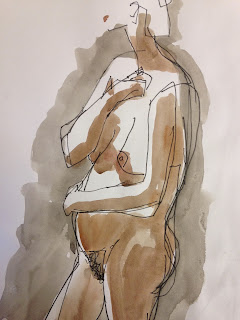At
last I managed to see inside this lovely church, St Anne’s in Dropmore a few
miles south of Beaconsfield.
It
was a Friday morning and a platoon of ladies of the Parish where buffing every
piece of woodwork and brass to greet the arrival of a new Vicar that coming Sunday.
Inside
the church porch is pinned this history of the church which gives some sense of
the treasures therein.
George M. Fortescue, nephew of Lord Grenville who established
Dropmore estate in 1792, founded St Anne’s Church, Dropmore, in 1865.
He inherited the estate on the death of Bishop of Lady
Grenville in 1864. The Bishop of Oxford
dedicated the church in 1866, and Dropmore became a parish in 1867. The Fortescue family added the transept in
1877.
Butterfield built both the church and transept. Later alterations to the church included the
placing of an organ on the site of the original vestry, and the building of a
new vestry in 1911. The later was
constructed in memory of Sir John and Lady Anne Aird of Sheepcote Manor.
Features of interest in the church include the east window,
which is the original, dating from 1866.
Another interesting stained glass window, by William Morris and Company,
is to be found in the vestry.
The Lord Courtauld-Thompson window is a good example of more
modern stained glass work, depicting his varied connections and Dorneywood,
which he left to the nation and is now used as a residence by the Chancellor of
the Exchequer. The window is dedicated
to Lord Courtauld-Thompson, his father, his sister Winifred, his sister Elspeth
and her husband, Kenneth Grahame, author of Wind in the Willows. The inkwell and Quill denote his occupation
as a writer.
Memorials inside the church, and tomb and vault in the
churchyard, show the association with the church of later owners of the
Dropmore estate, the Berry family, the head of whom was Lord Kemsley of
newspaper fame.



















